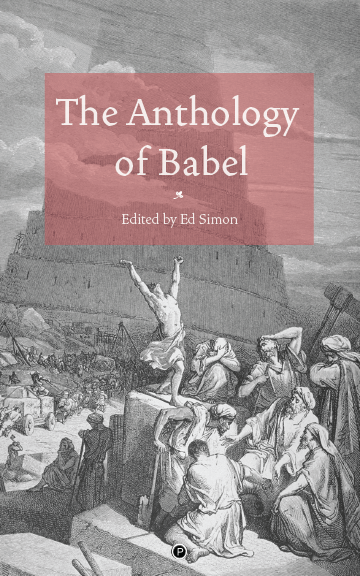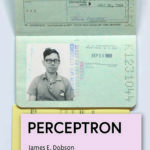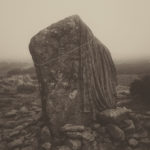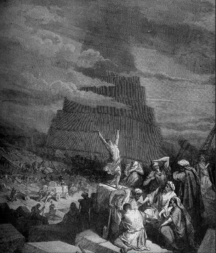Why should there only be literary scholarship about authors who actually lived, and texts which exist? Where are the articles on Enoch Campion, Linus Withold, Redondo Panza, Darshan Singh, or Heidi B. Morton? That none of these are real authors should be no impediment to interpreting their invented writings. In the first collection of its kind, The Anthology of Babel publishes essays by scholars on authors, books, and movements that are completely invented. Blurring the lines between scholarship and creative writing, The Anthology of Babel inaugurates a completely new literary genre perfectly attuned to the era we live in, a project evocative of Jorge Luis Borges, Umberto Eco, and Italo Calvino.
TABLE OF CONTENTS //
Introduction: Labyrinths of Imagined Literature – Ed Simon
Chapter One: The Body-Loving Philosophers – Stephen David Engel
Chapter Two: Deities of Encounter and Theory of Experience: an Analysis of The Great Darkness Text – Seth Ligo
Chapter Three: The Romance of the Minotaur Reconsidered – Katherine McLoone
Chapter Four: “The very Globe came undone”: Ontological Negation in Enoch Campion’s The Tragedy of Dracule – Ed Simon
Chapter Five: “All my heroines must like him”: Circumscribing the spouse in Jane Austen’s Plan of a Husband – Tom Zille
Chapter Six: Linus Withold and the Birth of the Rhizomatic Text – Eric D. Lehman
Chapter Seven: First-order Variables & Repression: Oedipal Relations in The Sandwich by Rubiard Whimp – Austin Sarfan
Chapter Eight: Beneath Unknown Skies: Writing as Erasure in The Rainberg Variations – Reed Johnson
Chapter Nine: Pedro Somar, traductor de Ramned, autor del Quijote – David Ben-Merre and Raul Neira
Chapter Ten: El fin del mundo: Uncharted Territory of Ernest Hemingway’s Fiction – Maria-Josee Mendez
Chapter Eleven: The Unfinished Works of R. A. Conlan – James Speese
Chapter Twelve: Stirring the Sentient Dust: Marie-Rose Souci’s The Grey Moth – Claire Daigle
Chapter Thirteen: Traduttore, Traditore: Authorial Inconsistencies in the Works of Redondo Panza – Julia Coursey
Chapter Fourteen: The Purists: Cooperative Fundamentalism and Aesthetic Dogmatics – Matthew Newcomb
Chapter Fifteen: From Paratext to Text: The Archeology of Heidi B. Morton’s Archive – Ryan Marnane
Chapter Sixteen: “What else was there to do?”: Fat Futurity and the Limits of Imagination in Desolation – Em K. Falk
Chapter Seventeen: “All My Life My Writing Is”: The Auto-Bio-Graph of Smalloysius F.: Being Told by Itself – Stephen Hock
Chapter Eighteen: The Gravity of the Situation – Bruce Krajewski
Epilogue: “Darkness Made Visible”: An Interview with Eamonn Peters on Imagined Literature – Ed Simon
Excerpt from Chap. 4: “The very Globe came undone”: Ontological Negation in Enoch Campion’s The Tragedy of Dracule
“I thrice shall nail the papal crown to his head/ as nail’d I the Saracens’ turbans theirs.” In act 4 scene 4 of Enoch Campion’s 1592 play The Tragedy of Dracule, the titular antagonist confronts with reptilian efficacy three Ottoman envoys sent by Sultan Mehmed II. The Wallachian prince, described as having serpent eye and tongue, hisses to his prisoners, saying “Your charge Constantinople’s scourge may be/but now a high’r god your souls sent to be/not to the sheep Nazarene false as yours/nor to the stiff-neck’d Jews’ God of Mos’ic law/for three in one, and one in three, all these/gods strut, lie, and die, three imposters all.” The dramatic action is placed in a Hungarian monastery, where the plays’ massive central personality, Vlad Tepes, son of Vlad Dracule of the House of Dragon has spent the entire scene torturing the unfortunate diplomats. The scene isn’t out of character for Vlad, as the scholarly and apocryphal tradition which has accumulated around the fragmentary text has it that the character has spent four acts murdering his way across Hungary, Romania, Saxony, the Balkans, and the Ottoman Empire. Now, after scenes which apparently included implement, dismemberment, rape, infanticide, and cannibalism, we reach the narrative denouement in which the arch-heretic sinner explicates his nihilistic non-theology, his “ontological negation” as philosopher Adolph Trachtenberg describes it.
Mathias Blum writes in Akiva’s Garden that “No play in the Renaissance canon, no play in the English canon, no play in literature is as terrifying as The Tragedy of Dracule, not because of what it says, but because of what it doesn’t say.” This play will examine these themes of negation which surround the rich folkloric extra textual tradition associated with a play none of us have ever been able to see performed in its entirety, fusing both the archival scholarship of Eamonn Peters with the hermeneutic interpretations of Trachtenberg.






Hi,
I am just checking in to ask when the sun of the Summer of 2018
rises in the world of the The Anthology of Babel.
All the very best,
Sjón
Hi Sjón, thanks for reaching out! This was a mistake from our side, the book should come out in Spring 2019 (we received the manuscript this summer).
Thank you, Vincent. I’ll set my clock to ‘spring’!